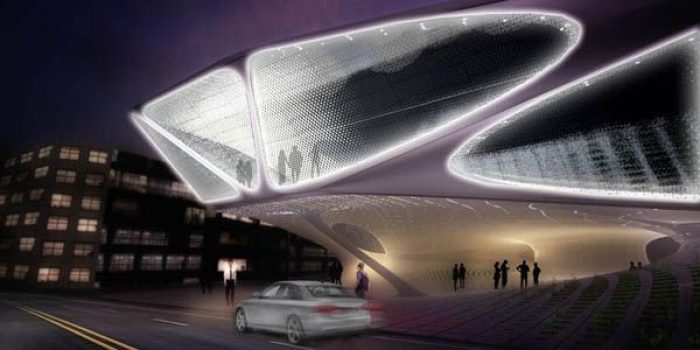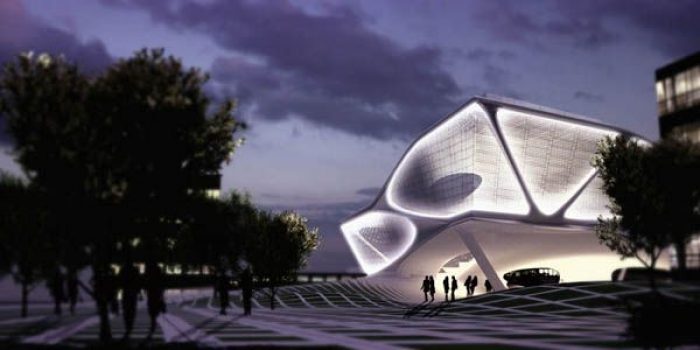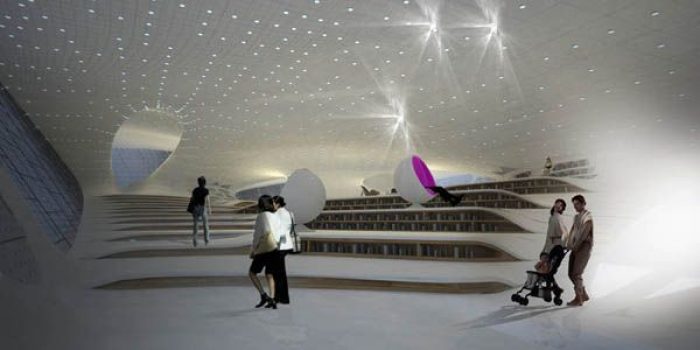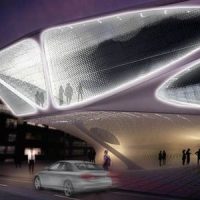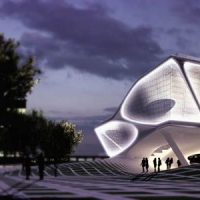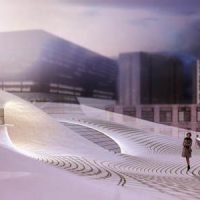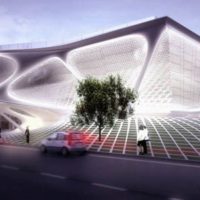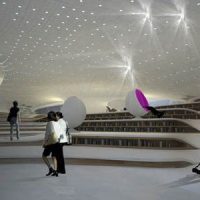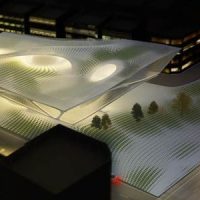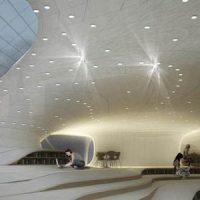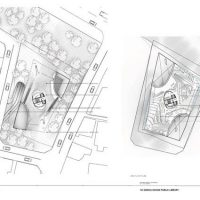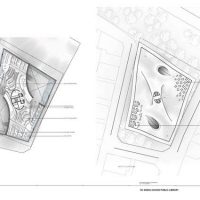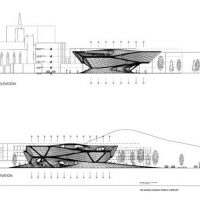The proposal for the Daegu Gosan Public Library challenges the conventional understanding of the spatial and social experience of a public library as a series of discrete reading rooms with defined thresholds and cluttered stacks. SDA, a Korean based firm, proposes an intelligent, open, and integrated library experience which supersedes the media storage methods of the past and changes the library space into a hybrid environment through ubiquitous information resources, integrated furnishings and active communal social spaces. The architecture is designed to enable and embody the spirit of open-source exchange and collective knowledge through free-form geometries, open plans and integrated amenities. The proposal has minimized the thresholds between spaces, floors, and functions to consider the library as an active, continuous, and fluid field of social, cultural, and intellectual discourse. More about the project description comes after the jump.
Conceptually and literally, the ground field of the site swells, peels, and multiplies vertically as a continuation of the adjacent park and urban fabric. This constant sectional change is articulated as a smooth vertical gradient which merges floors, ramps, stairs, terraces and furnishings into an inhabitable and ergonomic landscape culminating in an open-air roof-scape lounge and terrace overlooking the city of Daegu. The boundaries between floors are blurred, as the continuously walk-able surface which unifies the many spaces of the library facilitates circulatory, physical and visual connections both internally within the network of spaces and externally with the surrounding context.
The building is materialized as an in-situ reinforced concrete structure which, like all other aspects, has been designed to be fully integrated with the geometry of the library. The central core of the building provides its primary structural point of reference connecting vertically through the entire structure. The free-form geometry that defines the walk-able surfaces and unifies the building cantilevers out from this central core and is supported by its internal interconnections (ramps), perimeter interconnections (columns) and the lifted ground plane (foundation). The geometric logic of the form has been developed through a computational method known as “dynamic mesh relaxation” which relaxes planar mesh networks to “form-find” a continuously minimal surface. As developed in the 1950’s and 60’s through the seminal work of Frei Otto, minimal surfaces articulate the natural force paths of structural loads thus providing the optimal shape for maximum structural performance with minimal material. The shape of the surface, thus allows for relatively thin structure, which in our case is materialized as cast-in-place high performance reinforced concrete.
Credits:
Location : Daegu, Korea
Program: Public Library
Client: Daegu Metropolitan City Suseong-gu Office
Status: 2012 – Competition
Program Area: 3,100 s.q.m
Consultants: Buro Happold LA (Structural/MEP/Facades)
Project Team: Alvin Huang (Principal) David O. Wolthers, Filipa Valente, Chia-ching Yang, Joey Sarafian, Mo Harmon, Behnaz Farahi
- Courtesy of SDA
- Courtesy of SDA
- Courtesy of SDA
- Courtesy of SDA
- Courtesy of SDA
- Courtesy of SDA
- Courtesy of SDA
- Courtesy of SDA
- Courtesy of SDA
- Courtesy of SDA


